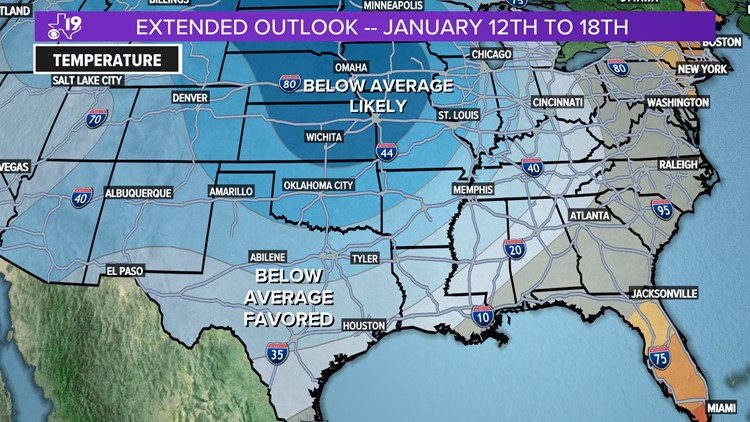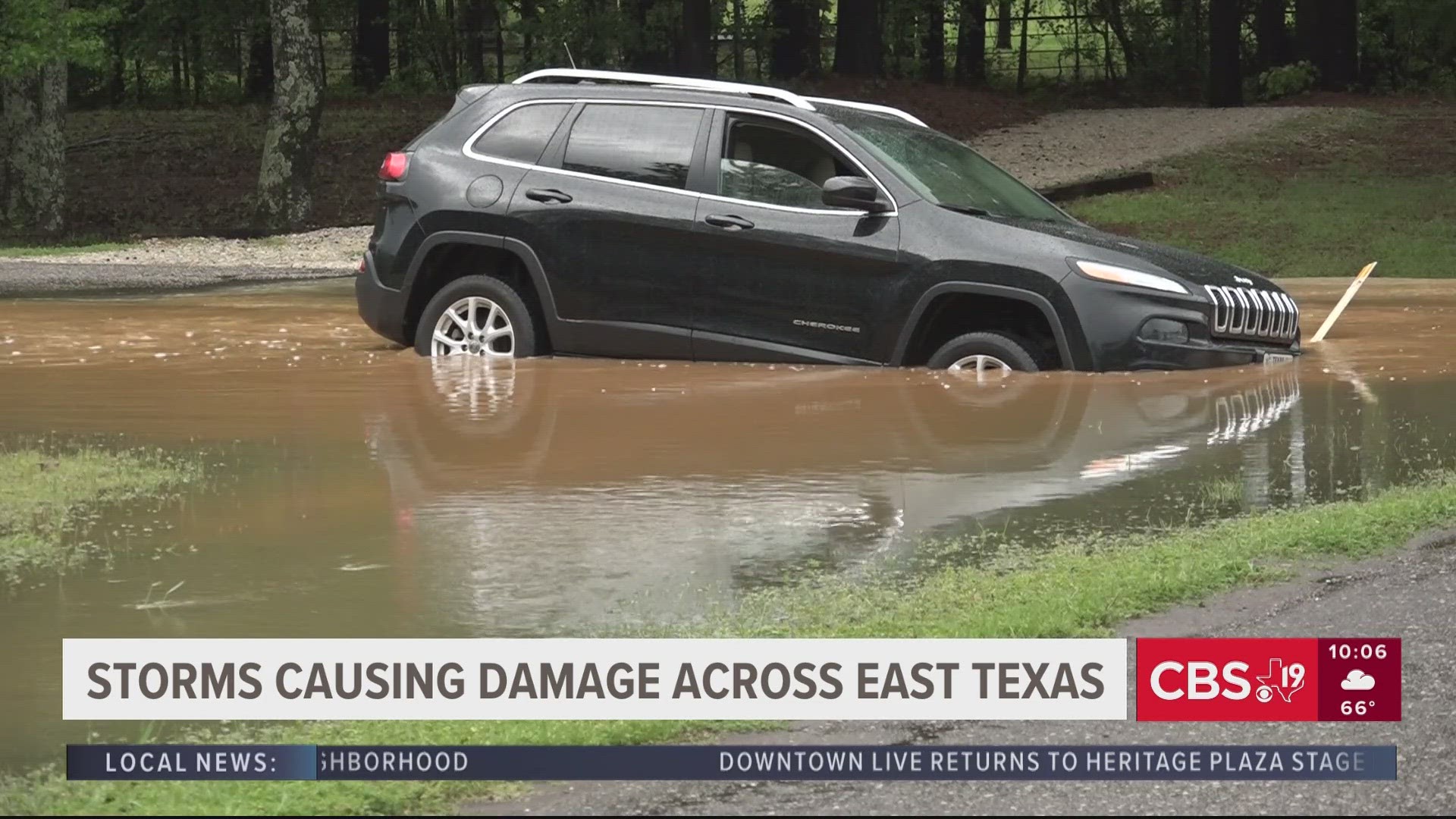TYLER, Texas — The winter lion has not roared in East Texas since the beginning of December. We've only dropped to or below freezing seven times.
- Nov. 1- 32°
- Nov 27 - 31°
- Dec. 10 - 32°
- Dec. 11 - 30°
- Dec. 26 - 29°
- Dec. 29 - 31°
- Dec. 30 - 28°
However, his trend could be changing over the next couple of weeks. Arctic air is currently building over northern Canada where temperatures were 25 to 30 degrees below zero Thursday evening.
This bitterly cold air is being held at bay by strong polar jet stream winds blowing west to east across Canadian provinces. The arctic air will remain locked up until a different weather pattern develops causing the polar jet stream to buckle. This change is forecasted to happen in about 10 days.

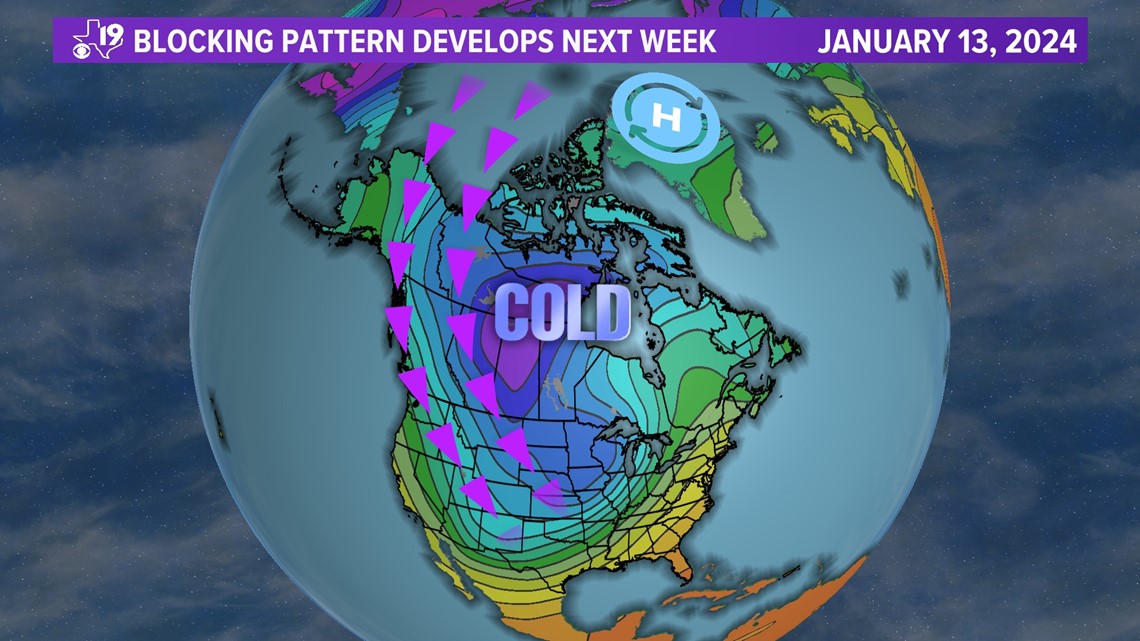
A strong area of high pressure around 18,000 feet is soon forecasted to develop -- that's about halfway up through the atmosphere. This high pressure area will block the west to east flow of the polar jet stream and cause it to buckle. The buckling will allow for bitterly cold arctic air to pour south into the United States.

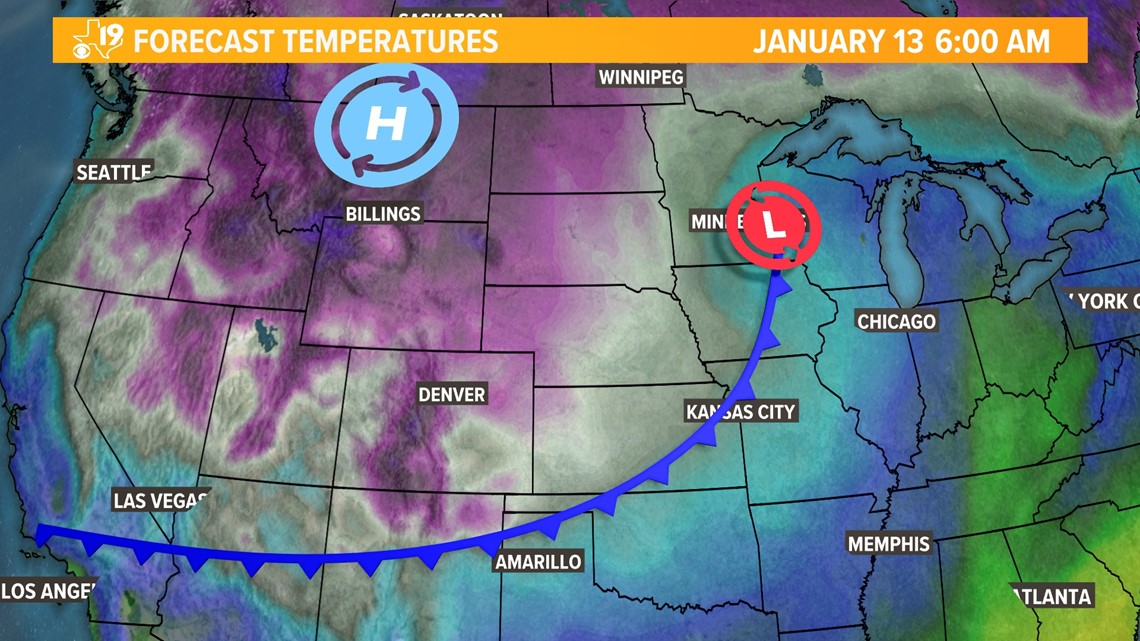
Below zero temperatures are very possible across the northern and central plains. It won't get that cold here in East Texas, but it's possible the coldest air we see all winter could arrive the middle to second half of this month.

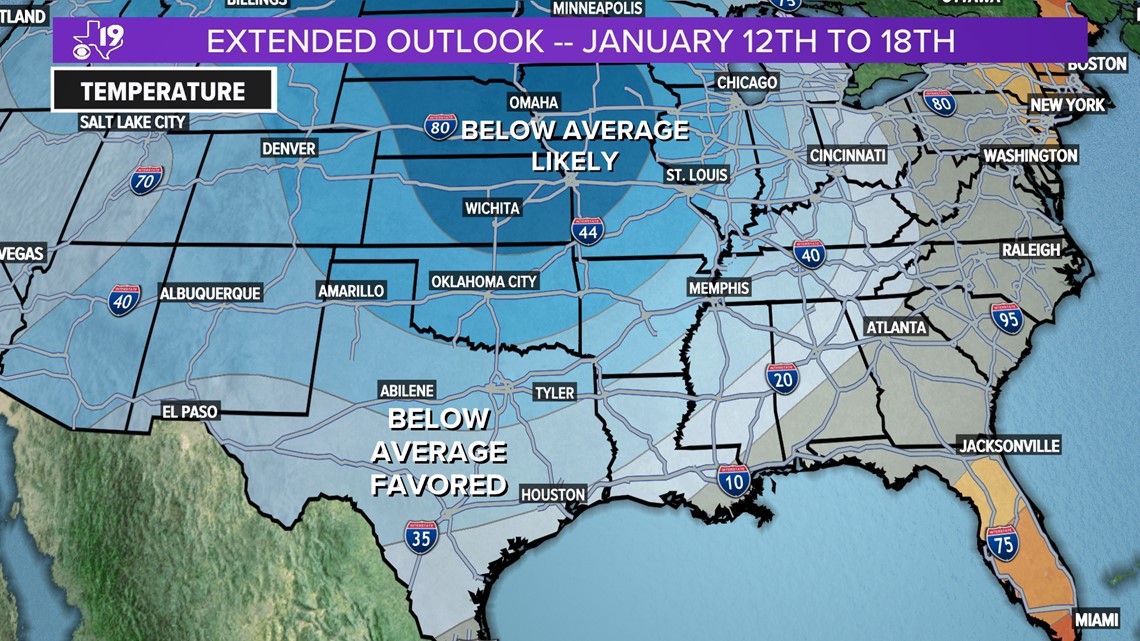
There are some uncertainties. Just how south will the arctic air push? The answer could lie in something called the Arctic Oscillation (AO). The AO fluctuates between a positive phase and a negative phase. When the AO is positive, the arctic air tends to remain closer to the North Pole. But when the AO goes negative, the U.S. can see some brutally cold, frigid air. The AO for the middle of the month is forecast to be highly negative.

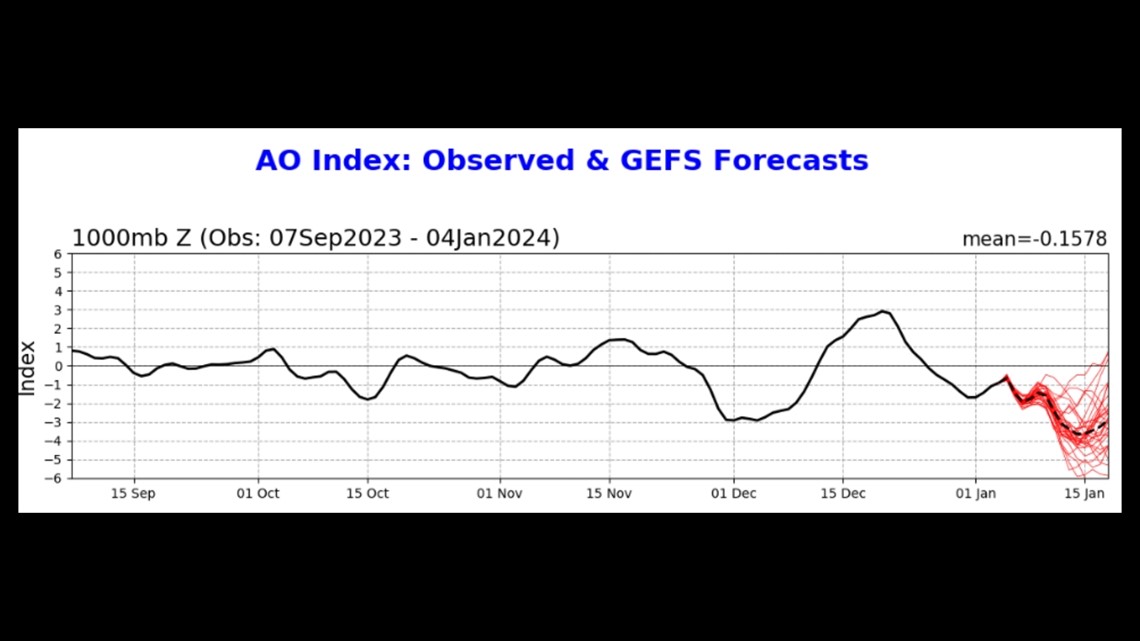
At this time, it appears we will experience colder temperatures than we did in late November and early December -- the last time the AO was strongly negative. There is something else we must watch as we head into the middle and second half of the month, colder air tends to produce a wavier jet stream. Ripples along the energized flow could lead to storms. The storms, if enough moisture is present, combined with cold air could lead to wintry precipitation at some point this month or into early February. But getting that combination to come together perfectly in East Texas can sometimes be like threading a needle and we all know how hard that can be sometimes.

